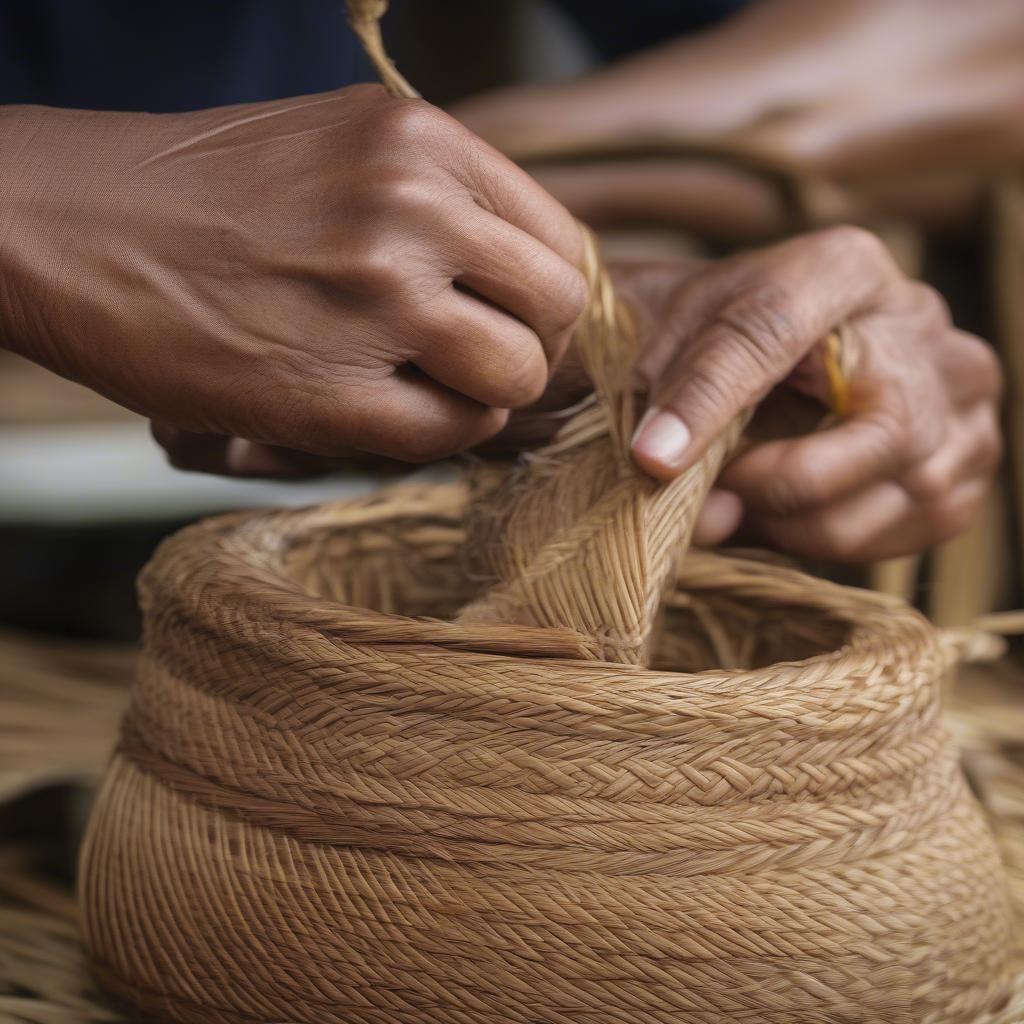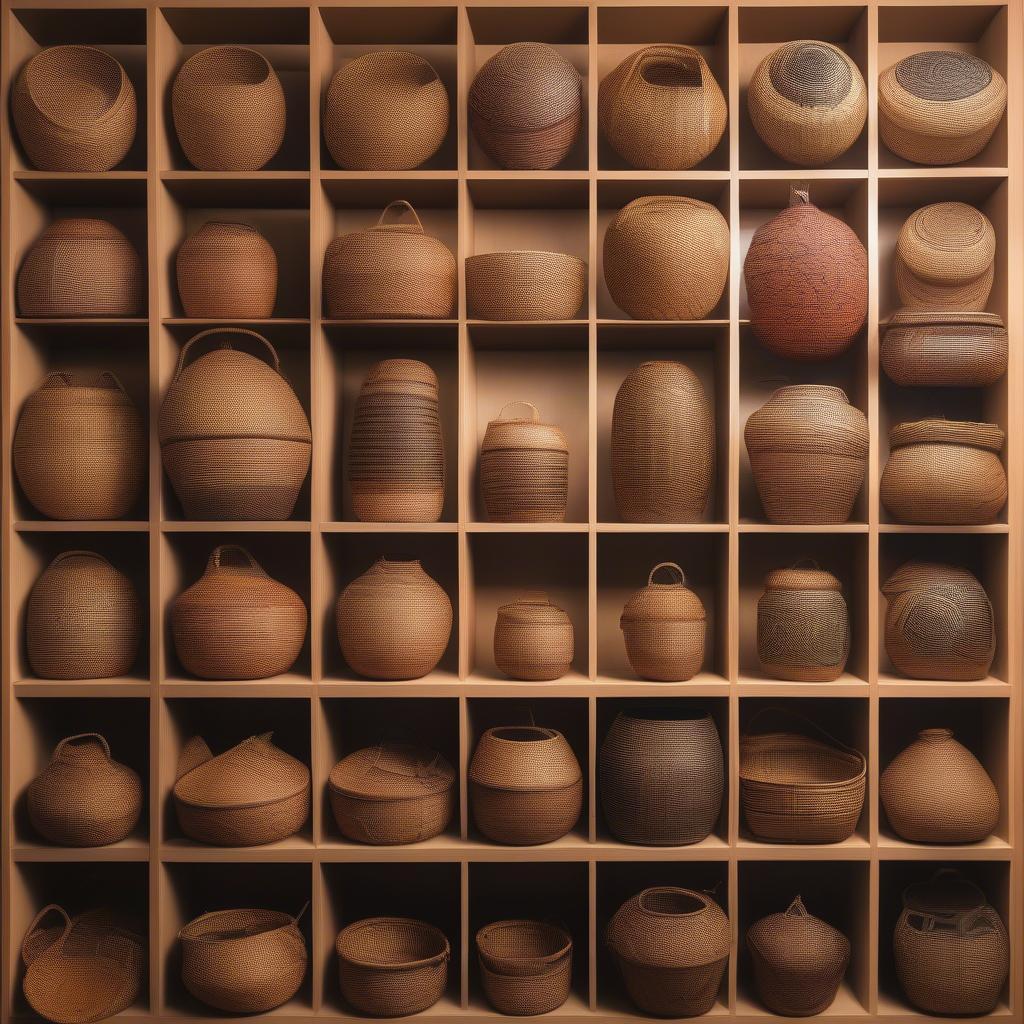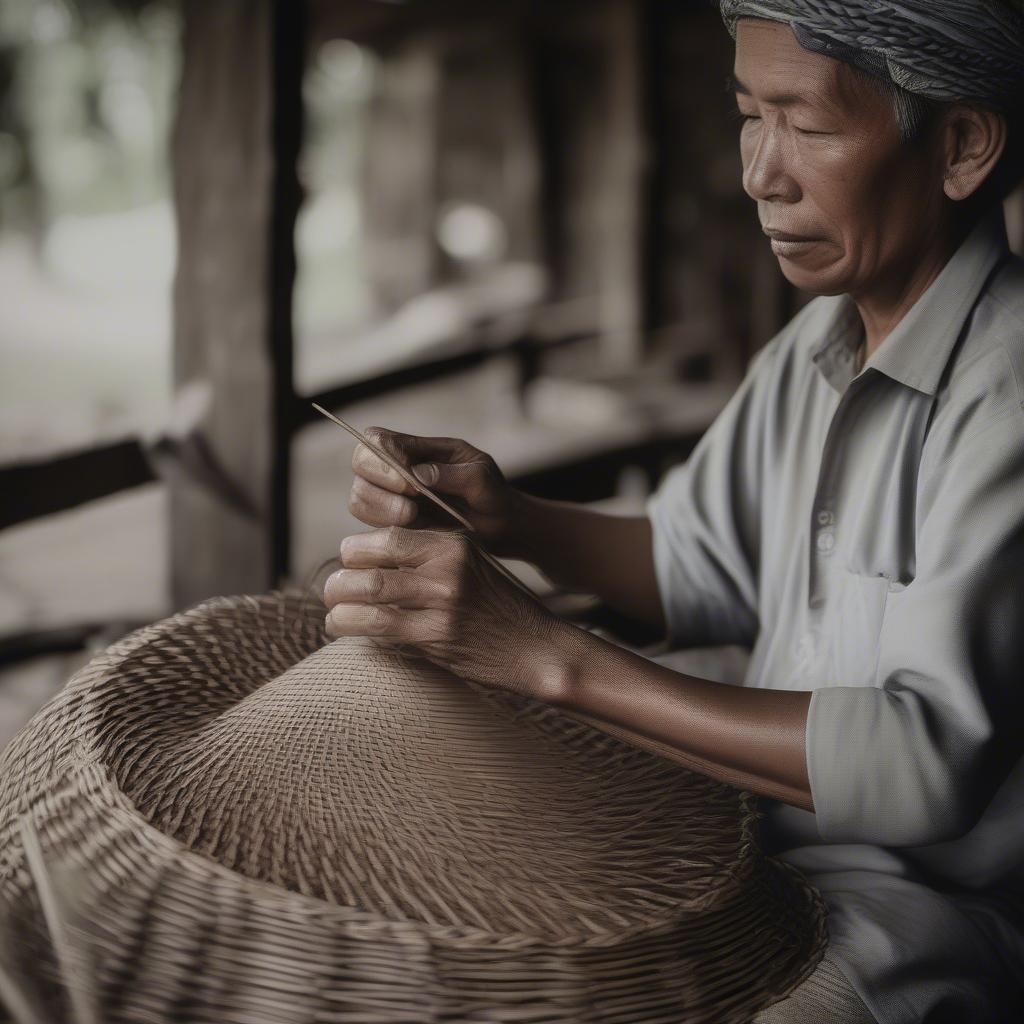Basket Weaving
Unveiling the Art of Malaysian Basket Weaving
Malaysian Basket Weaving is a captivating craft with a rich history, deeply intertwined with the country’s cultural heritage. From intricate patterns passed down through generations to the sustainable use of natural materials like rattan and wicker, Malaysian basketry offers a unique glimpse into the artistic traditions of Southeast Asia.  Traditional Malaysian Basket Weaving Techniques Demonstrated by Local Artisans
Traditional Malaysian Basket Weaving Techniques Demonstrated by Local Artisans
Exploring the Diverse Materials of Malaysian Basketry
Malaysian basket weavers utilize a variety of locally sourced materials, primarily rattan and wicker. Rattan, a strong and flexible vine, forms the framework of many baskets, providing durability and structural integrity. Wicker, often made from reeds or bamboo, adds texture and intricate detail. The choice of materials depends on the intended use of the basket, ranging from sturdy rice harvesting baskets to delicate decorative pieces. These natural resources are sustainably harvested, ensuring the craft’s longevity and minimal environmental impact.
What makes Malaysian basket weaving so unique? It’s the harmonious blend of practicality and artistry. Each basket tells a story, reflecting the weaver’s skill and the cultural influences shaping their craft. You’ll find everything from simple, functional baskets to elaborate pieces adorned with vibrant dyes and intricate patterns.  Different Shapes and Sizes of Malaysian Baskets
Different Shapes and Sizes of Malaysian Baskets
Traditional Malaysian Basket Weaving Patterns and Their Significance
Traditional Malaysian basket weaving showcases an impressive array of patterns, each imbued with symbolic meaning. These patterns often represent elements of nature, such as leaves, flowers, or animals, and are passed down through generations, preserving cultural narratives and artistic traditions. Some patterns are associated with specific regions or ethnic groups, reflecting the diverse cultural tapestry of Malaysia. Learning about these patterns provides a deeper understanding of the country’s rich heritage and the stories woven into each basket.
The Intricacies of Mengkuang Weaving
One notable example of Malaysian basketry is mengkuang weaving. This craft uses the leaves of the pandanus plant, also known as mengkuang, to create durable and beautiful items. The leaves are dried, cut into strips, and then skillfully woven into mats, bags, and other household objects. Mengkuang weaving, traditionally practiced by women, is an important part of Malaysian cultural heritage and a testament to the resourcefulness of its artisans.
The Cultural Significance of Basket Weaving in Malaysia
Basket weaving in Malaysia is more than just a craft; it’s a vital part of the country’s cultural identity. Traditionally, baskets played a crucial role in daily life, used for everything from carrying goods to storing food. Today, Malaysian basket weaving continues to thrive, representing a connection to the past while embracing contemporary design.
Have you ever wondered how to start a basket weave stitch? It can be easier than you think! Check out our guide on how to start a basket weave stitch. This intricate craft is a testament to the enduring legacy of Malaysian artisans. “Malaysian basket weaving is a living art form,” says Aisyah binti Ibrahim, a renowned Malaysian artisan. “It’s a celebration of nature, creativity, and cultural heritage.”  Malaysian Basket Weaver Creating a Traditional Basket
Malaysian Basket Weaver Creating a Traditional Basket
Preserving Tradition for Future Generations
Efforts are underway to preserve and promote traditional Malaysian basket weaving techniques. Workshops and training programs help ensure that these skills are passed down to younger generations, ensuring the continuity of this rich cultural tradition. By supporting local artisans and appreciating the value of handcrafted items, we can contribute to the preservation of this unique art form.
Looking for unique basket handles? Learn how to create beautiful open weave basket handles and add a touch of elegance to your projects.
Conclusion
Malaysian basket weaving stands as a testament to the country’s rich artistic heritage and sustainable practices. From the intricate patterns to the durable materials, each basket embodies the skill and creativity of Malaysian artisans. By understanding the history, techniques, and cultural significance of this craft, we can appreciate the beauty and artistry woven into each piece. You can also discover how to incorporate recycled materials into your weaving projects by learning [how to weave using plastic bags](https://basketweavee.com/how-to-weave-using-plastic bags/). For those interested in specialized bags, consider the weaver arborist rope bag or the organizing shoulder bag dotty weave. By supporting Malaysian basket weaving, we contribute to the preservation of a unique cultural tradition.
“The future of Malaysian basket weaving lies in innovation and adaptation,” shares Rafidah bt. Mahmud, a prominent craft historian. “While honoring traditional techniques, we must also explore new designs and materials to ensure the craft remains relevant for contemporary audiences.”
Need help with your basket weaving journey? Contact us at Hanoi, Vietnam or Tech Avenue, Suite 12, San Francisco, CA 94105, USA. Our 24/7 customer support team is ready to assist you.
